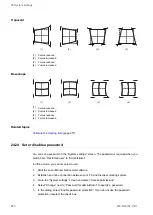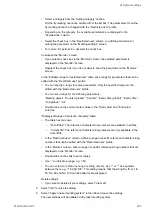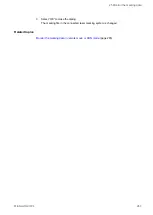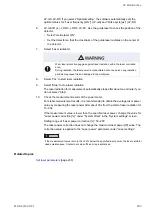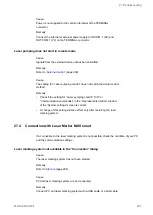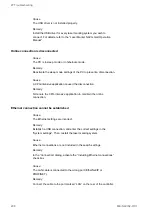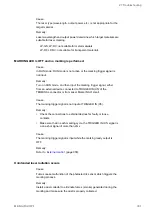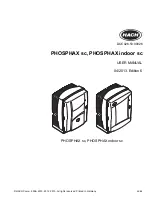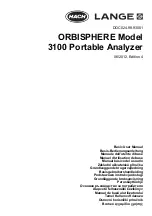
26 Maintenance
‒ “File No.”: Displays the file number that is selected for command transmission or
reception.
‒ “Command messages”: Displays the command messages transmitted and
received by the laser marking system. The recordable data length is up to 64
bytes. Unrecorded data is displayed in parentheses, for example (...70 byte).
• “Display format”: Select “Text” or “Hexadecimal” to change the display format of the
command messages.
‒ “Text”: The command messages are displayed in text form. Non-ASCII
characters are displayed according to the setting made for “Encoding for non-
ASCII characters” in “System settings” > “Communication”. Square brackets are
used for control codes such as start and end code, for example [STX].
‒ “Hexadecimal”: The command messages are displayed in hexadecimal format.
Each byte of the message is separated by a space.
• To export the entries of the command history as a TSV file, select “Save as TSV”.
• Select “Delete all” and confirm with “Yes” to delete all entries of the command history.
To delete the command history, log in as administrator.
This function is not available when backup files are edited in offline mode.
26.5 Inspect the laser power
Inspect the laser power regularly in order to maintain consistent marking quality. A usage
under severe operating conditions may require a daily inspection.
Use a commercial laser power meter to measure the laser power. The power meter must
meet the following requirements:
• Use a calibrated laser power meter.
• LP-GS: The detector of the laser power meter should have a damage threshold
(maximum average power density) of more than 1kW/cm
2
. The size of the detector
should be more than Ø20mm.
LP-RC, LP-RF, LP-RV: The detector of the laser power meter should have a damage
threshold (maximum average power density) of more than 10kW/cm
2
. The size of the
detector should be more than Ø10mm.
• High or low temperatures can result in different measurement values. Measure the power
with a normal temperature (20–30°C is recommended).
• Make also sure, there is no contamination in the laser emission port. If the laser emission
port is contaminated or damaged, the measurement results may be faulty.
1.
Install the laser power meter.
Place the laser power meter detector vertically down from the center of the laser
emission port at one-third to half of the specified work distance.
• LP-GS051(-L): approx. 45mm
LP-GS052: approx. 35mm
ME-NAVIS2-OP-1
291




